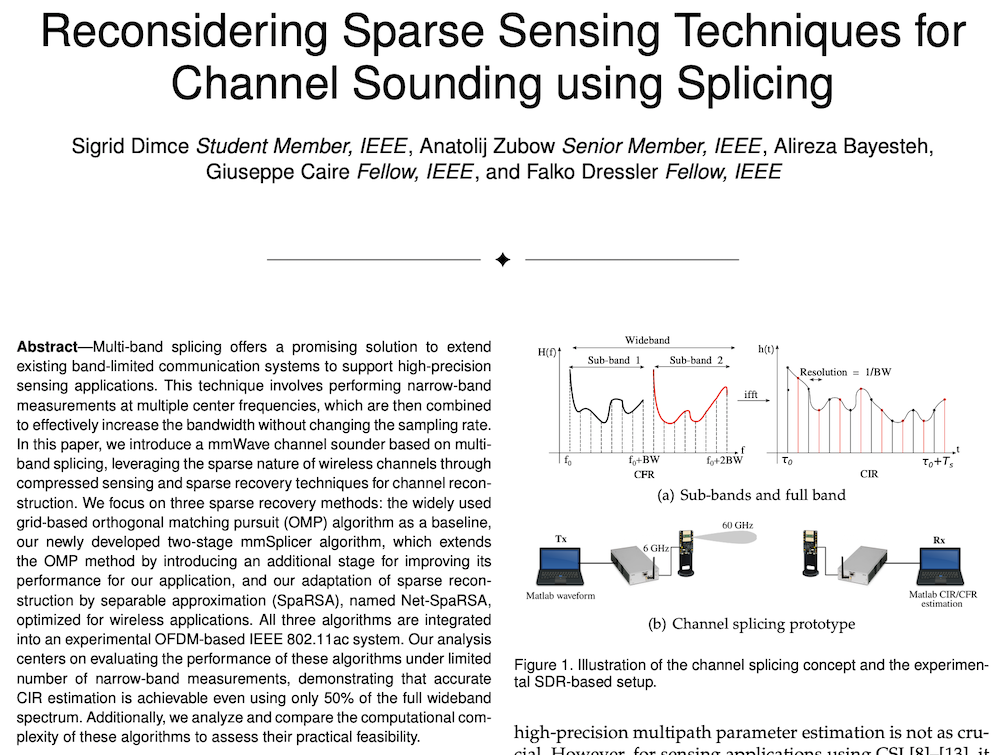Literature Database Entry
akan2010biologically-inspired-tutorial
Ozgur B. Akan and Falko Dressler, "Biologically-inspired and Nano-scale Communication and Networking," Tutorial, IEEE Global Communications Conference (GLOBECOM 2010), Miami, FL, December 12, 2010.
Abstract
The developments in communication technologies have yielded many existing and envisioned information network architectures such as cognitive radio networks, sensor and actor networks, quantum communication networks, terrestrial next generation Internet, and InterPlaNetary Internet. However, there exist many common significant challenges to be addressed for the practical realization of these current and envisioned networking paradigms such as the increased complexity with large scale networks, their dynamic nature, resource constraints, heterogeneous architectures, absence or impracticality of centralized control and infrastructure, need for survivability, and unattended resolution of potential failures. These challenges have been successfully dealt with by Nature, which, as a result of millions of years of evolution, have yielded many biological systems and processes with intrinsic appealing characteristics such as adaptivity to varying environmental conditions, inherent resiliency to failures and damages, successful and collaborative operation on the basis of a limited set of rules and with global intelligence which is larger than superposition of individuals, self-organization, survivability, and evolvability. Inspired by these characteristics, many researchers are currently engaged in developing innovative design paradigms to address the networking challenges of existing and envisioned information systems. In this tutorial, the current state-of-the-art in bio-inspired networking is captured. The existing bio-inspired networking and communication protocols and algorithms devised by looking at biology as a source of inspiration, and by mimicking the laws and dynamics governing these systems is presented along with open research issues for the bio-inspired networking. Furthermore, the domain of bio-inspired networking is linked to the forthcoming research domain of nanonetworks, which bring a set of unique challenges. The objective of this tutorial is to provide better understanding of the potentials for bio-inspired and nano-scale networking, and to motivate research community to further explore this timely and exciting field.
Quick access
Contact
Ozgur B. Akan
Falko Dressler
BibTeX reference
@misc{akan2010biologically-inspired-tutorial,
author = {Akan, Ozgur B. and Dressler, Falko},
title = {{Biologically-inspired and Nano-scale Communication and Networking}},
howpublished = {Tutorial},
publisher = {IEEE Global Communications Conference (GLOBECOM 2010)},
location = {Miami, FL},
day = {12},
month = {12},
year = {2010},
}
Copyright notice
Links to final or draft versions of papers are presented here to ensure timely dissemination of scholarly and technical work. Copyright and all rights therein are retained by authors or by other copyright holders. All persons copying this information are expected to adhere to the terms and constraints invoked by each author's copyright. In most cases, these works may not be reposted or distributed for commercial purposes without the explicit permission of the copyright holder.
The following applies to all papers listed above that have IEEE copyrights: Personal use of this material is permitted. However, permission to reprint/republish this material for advertising or promotional purposes or for creating new collective works for resale or redistribution to servers or lists, or to reuse any copyrighted component of this work in other works must be obtained from the IEEE.
The following applies to all papers listed above that are in submission to IEEE conference/workshop proceedings or journals: This work has been submitted to the IEEE for possible publication. Copyright may be transferred without notice, after which this version may no longer be accessible.
The following applies to all papers listed above that have ACM copyrights: ACM COPYRIGHT NOTICE. Permission to make digital or hard copies of part or all of this work for personal or classroom use is granted without fee provided that copies are not made or distributed for profit or commercial advantage and that copies bear this notice and the full citation on the first page. Copyrights for components of this work owned by others than ACM must be honored. Abstracting with credit is permitted. To copy otherwise, to republish, to post on servers, or to redistribute to lists, requires prior specific permission and/or a fee. Request permissions from Publications Dept., ACM, Inc., fax +1 (212) 869-0481, or permissions@acm.org.
The following applies to all SpringerLink papers listed above that have Springer Science+Business Media copyrights: The original publication is available at www.springerlink.com.
This page was automatically generated using BibDB and bib2web.






